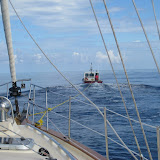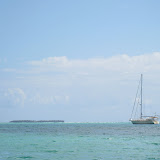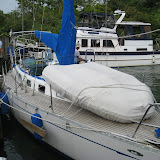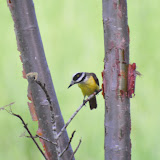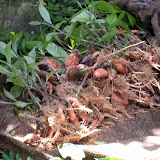DENNY’S BEACH, LAGO IZABAL, GUATEMALA 8-20-2010- 8-25-2010
Ranging from mangroves on both the Pacific and Caribbean coastal areas, and sweeping pine and cloud forests with plots of farmland; maiz, sugar cane, vegetables within, Guatemala is often referred to as the land of eternal spring; the climate being ideal to cover the forests in lush green during her rainy season.
try this link to see a picture:
flower
The national flower is the Monja Blanca or White Nun Orchid. There are over 600 species of Orchids that can be found throughout the country. There is an abundance of animal, fish life and plant life throughout Guatemala. The country is home to 19 ecosystems that include over 250 species of mammals, over 600 species of birds and over 200 reptile and amphibians species along with many varieties of insects, spiders, moths and butterflies.
Lago Izabal is the largest lake in Guatemala. It is thirty miles long and eighteen miles wide at its widest. It is relatively shallow; about fifty-five feet in the center and twenty feet deep in most parts. This is a freshwater lake from which the Rio Dulce meets the ocean waters at Livingston. Lago Izabal is surrounded by the "Sierra de las Minas" mountain range to the South and the Santa Cruz Mountains to the North. The winds channeled through these mountains to the shallow Lake can cause significant chop and a cruising boat to drag at anchor. There is a nice map of the lake on the mayaparadise.com website under Lago Isabal -maps -overview
map Lago Izabal<>http://www.mayaparadise.com/izabal/izmap1.htm
One of the main attractions is the fresh water sea cow or Manatee which can weigh up to 2,000 pounds. In danger of extinction, these Manatees represent the largest mammals in Guatemala. Also there are reports of crocodiles, otters and other mammals and reptiles in the less-developed areas where other rivers feed the lake.
THE PLAN
The attraction for twelve boats of cruisers and their guests this week was a trip to Lago Izabal, affording an opportunity to stretch our boats’ legs for a bit. The entry to the Lake is only a few miles from Tijax, past the narrows and the Castillo. One of the Mario’s cruisers, Jimmy on Blue Water Cat, wanted to visit the Restaurant and Bar at Denny’s Beach, an establishment known far and wide for its Full Moon parties. Another set of cruisers, Patty and Gary on Lorelli wanted to visit the far end of the Lake and the River Oscuro, which can be accessed by dinghy after an 18 mile sail to the west of the Lake from Denny’s Beach. A plan was hatched. There would be a sailboat race to Denny’s Beach at the time of the full moon. After a few days at Denny’s, anyone who wanted to go to explore the rivers to the west would move on down the Lake together. There can be safety in numbers when heading to some of the outlying areas off the beaten tourist path.
Jimmy wrote to Denny at Denny’s Beach and suggested the plan below. Denny responded with the altered plan and the boats began to sign up for the race.
Here's the SCHEDULE for the full moon party suggested by Jimmy, after checking with Patty, Gary and Roy
Friday - August 20
Flotilla - Marios to El Castillo - leave Marios at 11 am
Sailboat race - El Castillo to Denny's Beach (no motors) - Race starts at noon
Saturday - August 21
7-8 am Morning Hike
8-9 am Breakfast at Denny's Restaurant
9-10 am Frisbees
10-noon Horseshoes
noon-1 pm Lunch at Denny's Restaurant
1-2:30 pm Kayak Races
2:30-4 pm Volleyball
4-6 pm Happy Hour at Restaurant
6-8 pm Dinner at Restaurant - Reservations required
8 pm till ? Campfire on Denny's Beach
Here we have DENNY’S suggested schedule: so Sea Star who had been vacillating was hooked!
SATURDAY
8 to 9 am - Bloody Marys
9 to 10 am - Breakfast (If you feel like it, if not more bloody marys)
10 to Noon - Kayak Races (Or rather chugging beer competition)
Noon to 1 - Lunch (Once again optional.)
1 to 4- Beer and Rum drinks. Margaritas, Pina Coladas, etc. permitted
4 to 6 - Happy Hour (For those still conscious, beers and cubas 10Qs) {That’s US $1.50}
6 to 8 - Buffet ( Can you believe he is going to play for us?)
8 until - Rum. Beer, Sex on the Beach, the latter not being a cocktail, if you will excuse the pun. If we remember there will be a beach fire. Roy can play cards. Gary can take some of his blue pills and chase the pigs around again.
Midnight on - Huge storm on lake. All boats lost.
Sunday all day - Drown your sorrows at Denny's Bar. Rent rooms.
Denny wrote:
Now I don't know what you all think of this restructured itinerary, but it seems much more realistic than thinking that cruisers are actually going to get up and go hiking at 7 in the morning and throw frisbees. We cruisers are highly-trained individuals and I think my itinerary contains a much more practical plan for the day which will draw on all our years of sailing experience.
I would appreciate your feedback on this.
Will look for some pics of the full moon parties of the past, but did not own camera in those days.
SHALL WE GO?
As part of the deliboration Sea Star, now looking especially spiffy with her newly finished teak, thought long and hard about giving up her newly acquired sun awning , air conditioning and comforts to be out at anchor again.
Dan and I invited our neighbor boat from Tijax,
Braveheart, with Holly, Jack and pero Charlie, to climb aboard with us as they couldn’t move their boat off their dock. They attached their dinghy to the back of Sea Star and off the Tijax dock we went. Precisely at noon on August 20th, Sea Star and many other boats lined up all across the river off of Blue Water Cat, organizer Jimmy’s boat, and the six mile RACE to Denny’s WAS ON!!
RACE TO DENNY'S BEACH
The wind was howling out of the NE --at 5 knots! We may have seen 8 knots for a short time in a few puffs so the race was quite low –key. In anticipation of low winds three boats had rigged their spinnikers, lightweight and colorful sails. Sea Star did not rig her spinnaker because the race was ten miles and that seemed a lot of work for little gain at the time, anyway we knew we couldn’t win, we were dragging a dinghy for Braveheart.
But boys will be boys and competition feels good! Jack steered and Dan trimmed our main and jib and kept us in the race - even with such adverse conditions (did I mention we were pulling a dinghy?) and so many lighter craft than the 35,000lbs of Sea Star. With Holly out on deck calling the best wind available and the guys hand steering and making sail adjustments Sea Star held her own.
Then came strategy time. Why were eleven boats closer to that point of land than we were? The wind seemed better away from the land where we were, and so we kept far outside of everybody else, riding the puffs when they came. Pretty soon the other boats needed to tack out toward us to make the turn for Denny’s Beach.
Sea Star sure looked like she was in the lead (and did I mention we had been pulling a dinghy like an anchor?) We were all so tense and the concentration everywhere was heightened. Lots of boats thought they had a chance for the two free dinners to the winner at Denny’s- the pack was closing in as we all were heading toward the Beach.
The lightweight tiller-steered Calliope was gaining on us fast, but we had the right of way, we weren’t going to move out of her way! Jack verbalized our right of way and with not too many feet to spare, as Jack held fast to his course, Calliope did a jibe and sailed away.
Someone from Denny’s came on the radio to tell the boats exactly where the finish was. We were almost to the red buoy! We were amazingly on course and perhaps moving at 4.3 knots toward the area of the finish (still dragging the dinghy) when we started to worry about stopping the boat and a too hard approach to the red buoy. Jack got the boat over the line and we quickly veered off to take in sails.
DID WE WIN?
In our minds we had won—in the Denny’s Beach guys minds, the ones who counted and in the picture they SAID they had, despite a 30’ tri-maran crossing the line ahead of Calliope, Calliope was the winner, the tri-maran was second and Sea Star third(even with the handicap of dragging the dinghy!)
All the while the last half mile jockeying for position was proceeding, NOW the wind was building up. The sky darkened and as boats scurried to find a good spot to drop the hook -it started pouring. Poor, open cock-pitted Calliope had no engine and had a really hard time getting attached to her mooring in the now howling wind. The guys from Denny’s helped them and gave hints to the rest of us on good places to drop the hook or how much chain to use.
I think we pulled in at around 2:30 PM. After about two hours when we all thought the rain was manageable the crew of Sea Star headed into Denny’s to find out the official results. All of us on Sea Star felt we had been cheated-they say they have a picture showing the results but we haven’t yet seen it-( and after all, we were dragging a dinghy and we deserved a break!)
The race was on a Friday, and Friday night Holly, Jack and Charlie went ashore and took an air conditioned room at Denny’s. We all ate at the restaurant after Happy Hour and a guy who was traveling played guitar and sang with Gary from Lorelei. We were really glad to be at Denny’s again, rememboring good times after our visit twelve years ago, and it seemed a long way from the dock at Tijax although it was only a few miles.
WE ARE THERE!
We went to bed thinking about the morning’s activities- but Dan and I overslept- no 7:00AM hike for us. We drove our dinghy in for breakfast at about 9:00AM to find the dinghy a bit soft. Apparently when we cleaned off the green river slime in preparation of leaving Tijax, we popped a tiny pin-prick hole in it. Oh, well. We will need to pump air in regularly and fix it when we go back.
Dan and I were eating breakfast when a guy named Chris who was crewing aboard Lorelei for a chance to go to the Lake, paddled up in Lorelei’s kayak. He had been out since first light paddling on the lake and didn’t want to miss the upcoming kayak races.
At 9:00 the kayak races began; tandem kayaks with strong, Heavy wooden oars. Four sets of three Kayaks went out separately to round the three placed buoys and retun to shore. Big surprise -the really in-shape maybe forty year old Chris won every heat -and he was in all three heats after spending his morning paddling. Then, at about 10:00AM the races were over and all who wanted were given a winner’s prize; a shot of tequila. Chris was now on to teaching a pretty young woman to windsurf. We always try to find out but never can, how people so young can afford to be out cruising full time!
FULL MOON- actually was on the 24th
So Saturday was a busy day for shore activities; swimming, kayaking, hiking, bocchi ball, horseshoes and finally volleyball and Mahjong (board game). There were arrivals by lancha and dinghy of more partiers both Guatemalsn and Gringo. Then Dan and I took a quick rest before Happy Hour, Full Moon Party with an amazing buffet of King Mackerel, chicken, barbequed pork, salad, potato salad, and cake, then more music from Jerry, Gary and Doris, a lot more rain, thunder and lightning , beautiful bonfire and finally sleep. We did get a bit of wind and thunder and lightning that night which woke me, but Dan slept just fine.
RIDING ON THE TRAIL
Sunday’s plan was to lay low -but Denny has some Guatemalan farming neighbors with horses who were not using them on that Sunday, and trail rides could be hired for only 100Q US12.00 for a half a day and Holly and I were game. Twelve riders including me, Kathy, set off for the fields, a cave, fresh river pool swim, and hills at 9:00AM with one old Guatemalan guide, two little girls, maybe seven and nine years old in flip-flops walking behind the entire five mile walk while the Gringos rode, to close the pasture gates and switch recalcitrant horses with a green sapling branch.
After the ride and on Sunday night I was soooo sore and tired. It was definitely worth it, though. The scenery was really spectacular. The poor horses had to walk first UP what seemed to be dry stream beds with strewn rocks; quite steep and narrow, and then back DOWN a different path, equally rocky and difficult for the horses to keep their footing and for a Gringa to keep her large butt on a slippery saddle! Walking through the low streams with the horses splashing was fun and could cool you off a bit. We had to watch the barbed wire as we passed through the fences though, the horses might get too close and you could hit your leg. I was really frightened when the horse in front of mine just stumbled and went down on its two knees. The poor Gringa fell forward over its head and just got out of the way while it struggled to its feet again. She had a few cuts on her hands and arms but was ok.
WESTWARD TO THE RIO OSCURO
Monday morning Holly, Jack and Charlie along with Dan and Kathy on Sea Star, Gary, Chris and Patty on Lorelei,and Jimmy on Blue Water Cat set out west across the Lago to Rio Oscuro 18 miles away. On the way we saw a bit more of the thirty mile long lake, but also we saw many, hundreds maybe, of dead catfish just floating on the surface. What was killing them, no one had any idea- maybe the Lago was smothering the oxygen for some reason? Maybe the Lago was too heated? Maybe sulfur under the water? We just didn’t know why there were so many fish dying- but at Denny’s one of the help went out daily to collect the carcasses so the beach area was clear. Didn’t make me feel like swimming but we went in a few times for a did because it was soo hot.
We then dinghied up the Rio Oscuro and another River for a leisurely three hours until Braveheart ran out of fuel, Lorelei was low on fuel and the bugs were beginning to come out. The current into the river was strong and we used more power than usual to move each boat. Then we floated out with the current ,checking for birds and creatures as we moved along. I think a most interesting thing was seeing the huge, circular swirls of what I later was told are Tarpin (large fish more than 100lbs ). In the swirl I occasionally saw the ridge of a curved back and an extended fin, shorter than but similar to a shark. Since we were looking for crocs I was hopeful, but knew what I was seeing was a fish. Dan was disappointed in the bird-life. It could have been the time of day, probably was. We all gathered at Blue Water Cat for a potluck. It was very comfortable stretched out on the trampoline of the large catamaran.
REAL WILDLIFE
Since we had little fuel for the dinghies we moved on the next day, after a rainy night to Finca Paraiso, a hot spring-fed waterfall and tourist attraction. While preparing to go, Jack who had been helpfully bailing water out of our dinghy and his, was startled to be in HIS dinghy with a snake! It wasn't a large snake, just a brownish, green non-descript color and longer than a long nightcrawler, as thin as a pencil. He removed it from his dinghy, flipping it over the side with his air pump handle. The strange thing about this was that we had just been laughing at the words of our guidebook that said that you needed to be careful when the Rios have hydrila floating around, which there absolutely was, because snakes, iguanas and small animals get stuck on the stuff and bail out when they find "land"- this time the security of Jack's dinghy. We don't know what it was and my picture didn't come out, either.
Enjoy our extensive slideshow-some pics are from Jimmy
HOT WATERFALL?
We arrived at Finca Pariaso at about noon and all eight of us and three dogs bounced in a cart behind a tractor, sun glaring down and broiling, to the steep root and soil stairs which led to the shade and rocks and pools below the falls. RELIEF! The current in the pool was verrrry strong! I had to swim my hardest to reach the waterfall, then couldn’t get up on the rocks as many teenagers were under the jacuzzi-like HOT falls. Well, who cares because it was too hot for me under the waterfall I managed to reach, and farther away the river was actually cool and refreshing.
After an hour in the water we went back on the tractor and then to our boats. Not trusting the weather (EVER on Lago Izabal) we moved to a more secure anchorage where we were safe from all directions except the west. Where did the wind and rain, thunder and lightning come from that night? If you said west…… but we did not move and all did ok. The three anchors held and after sleeping late we started back to the Rio Dulce marinas.
THERE'S NO PLACE LIKE.....
We are again snuggled up to the dock at Tijax, with full use of air conditioning, ahhhhhhhhhh.
